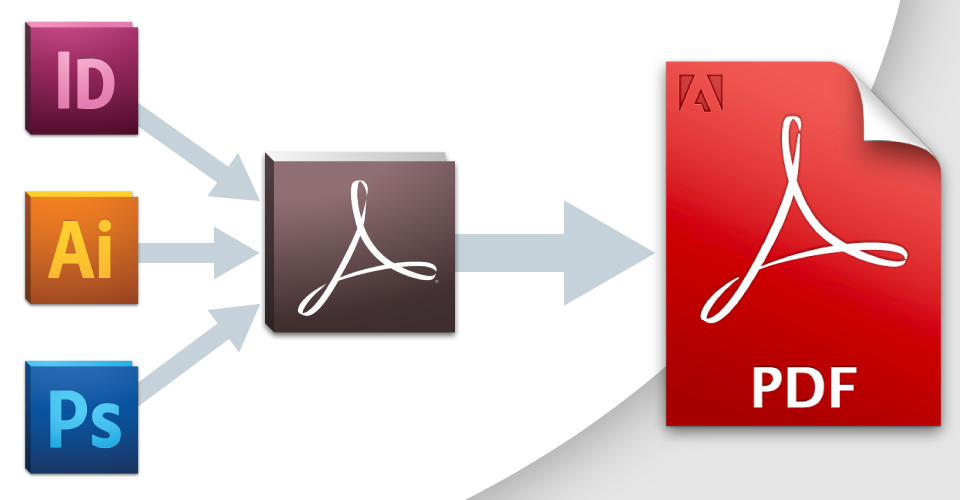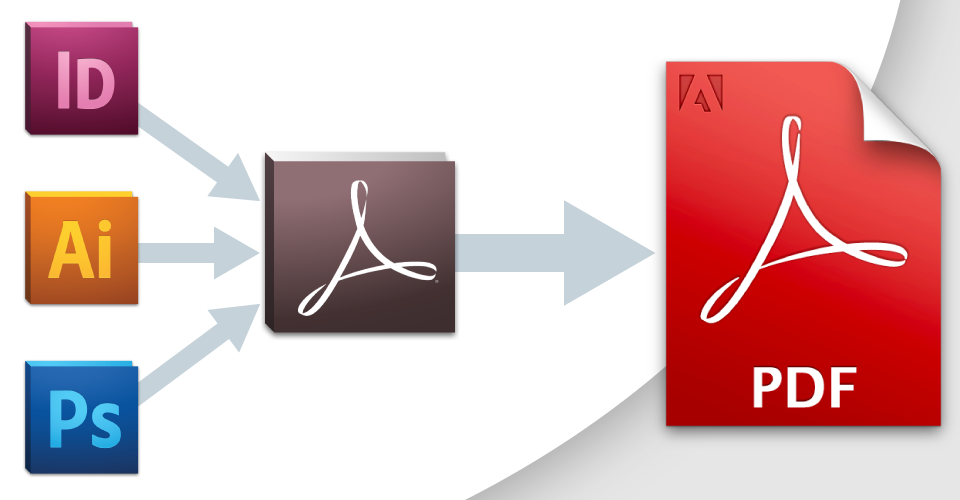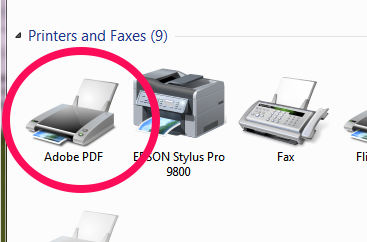Here at the shop we get this question surprisingly often: “What PDF settings should I use in my export, Standard Quality, High Quality or Press Quality?" This is typically in reference to the export or 'save as' options for PDFs available in Adobe InDesign, Illustrator or Photoshop, but can also pertain to any software that makes use of the standard profiles found in Acrobat Distiller. So now some of you may be asking:
What is Distiller?
OK, so let's back up a little bit for those of you who do not know what Distiller is or how it is related to the PDF export in your Adobe or other page layout programs.
If you have Adobe Acrobat Pro installed on your computer (included with most flavors of Adobe Creative Cloud), it comes with an additional software package called Acrobat Distiller. Distiller is the software that allows Acrobat to create and edit PDFs, and it also allows other software to generate PDFs via the Adobe PDF Printer. It does this primarily by installing a “virtual printer,” usually named “Adobe PDF,” in your Devices and Printers. In Windows, click on the “Start button / Devices and Printers” to see if this printer exists. If it does, you have Distiller.
What Does Distiller Have to Do with My Export Settings?
Acrobat Distiller is where your export settings live. When you save a custom export setting in Illustrator or InDesign, it is saved to Distiller's Adobe PDF Profile library. Conversely, if you save a profile in Distiller, it will become available to any Adobe software that uses these profiles. While PDF is a native file format of Illustrator, and your export may not necessarily use Distiller directly, these profiles are shared across all Adobe products capable of generating PDFs.
In addition, if you have software that is capable of printing, but does not have it's own built-in PDF exporter, or if the exporter is incapable of generating press-quality PDFs, that software will be able to make use of Distiller to generate PDFs using the standard and custom profiles available in it's library.
While it used to play a much larger role in the prepress & design department, Distiller is all but forgetten & invisible in today's Adobe workflow, but it's not a bad idea to be aware of it and what it's role is in the Acrobat software suite.
But I digress. I promised you I would give you the low-down on the difference between the various PDF Export settings, so...
Comparing Your PDF Export Settings
PDF stands for “Portable Document Format,” and PDF were originally intended to be just that: an electronic document that could be easily transferred, emailed, etc. To this end, Acrobat employs an impressive array of methods to make your PDF more “portable.” Unfortunately, many of these methods will make your PDF unsuitable for commercial printing. In general, PDFs suitable for commercial printing should use the CMYK color-space and all the images should be at least 300 dpi. So let's see how Acrobat's standard settings stack up:
| Setting | Color | Image Depth |
|---|---|---|
| Smallest File Size | RGB | 100 dpi |
| Email Proof | RGB | 100 dpi |
| Standard | RGB | 150 dpi |
| High Quality | unchanged | 300 dpi |
| Press Quality | CMYK | 300 dpi |
As you can see from this chart, “Press Quality” is the only setting that converts the file to CMYK and will not compress images any lower than 300 dpi. There are a few other reasons this setting is more appropriate for commercial printing, but these are the most basic ones. So the short answer is: Always use the Press Quality setting!
What About Those Other Settings?
So you may have noticed that I left a few settings out of this discussion. In particular, the PDF/A and PDF/X settings. These are PDF ISO standards that have specific purposes that I explain in a little more detail below. Although I have yet to work with any commercial printer that requires these standards, there are some who will ask for the PDF/X standard. In case you're curious:
PDF/A
The “A” stands for “Archive.” This standard is intended for the digital preservation of electronic documents, and prohibits features ill-suited to long time archiving.
PDF/X
The “X” stands for “Exchange.” This standard is intended to facilitate graphics exchange between clients and print providers. This would seem to be a good choice for commercial print, but unfortunately it features strict restrictions that may serve to frustrate less-technical designers. In addition, it forces color profiles and other data like “output intent” that may simply be discarded by your print provider. In short, don't use this unless it is specifically required by your print provider or prepress workflow.
There are other settings and considerations that you should keep in mind when preparing files to be sent to a commercial printer, and many of these are explained in my previous post:
5 Tips for Creating Quality PDFs from InDesign
It can be a bit of a learning curve, but keep at it, and you'll get the hang of it. Also, don't forget to talk to your printer to ask them how they prefer files be sent to them. They can be a wealth of information, and most will be happy to help.



